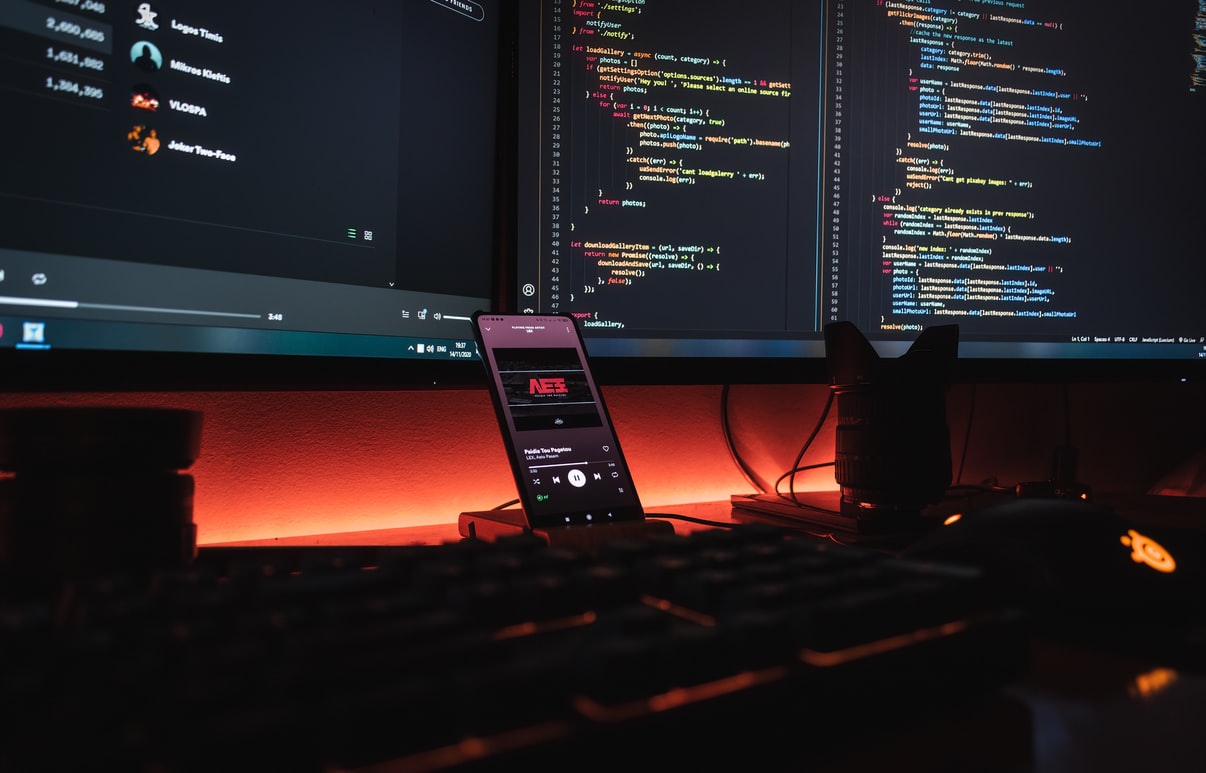As a Consumer Product Goods (CPG) manufacturer, 80% of the sales is still attributed to physical stores as compared to e-commerce platforms.
That’s why it’s essential that your merchandise is displayed in an aesthetically beautiful and well-organized retail store environment.
And, a retail store audit can help you achieve this.
Retail store auditing will not only help your customers find your products on the shelf easily and quickly but also motivate or influence their purchase decision.
Ultimately, it will increase your sales, improve your brand image, and grow your business.
But doing it all by yourself using old-school manual auditing practices is not that feasible anymore.
Thankfully, AI & Image Recognition is an emerging technology that is transforming the world of retail store auditing.
Today, many CPG brands worldwide are leveraging the benefits of AI-powered retail store audit software like Shelfwatch by ParallelDots to identify discrepancies in stock levels, monitor & track inventory levels, and ensure they always have the right products on the shelves.
What about you?
If you're also considering replacing your traditional retail store auditing with digitized retail store audits but are unsure where to start, this article is for you.
We will shed light on the use of AI in retail store auditing and explore the advantages of adopting new age Image Recognition-based auditing.
What is a Retail Store Audit?
A retail store audit is a formal, systematic process of evaluating various aspects of a retail store performed by bands and manufacturers.
It involves:
- Product displays on the shelves
- Out-of-stock products
- Store operations
- Inventory supplies
- Planogram compliance
- Competitive information
- Product pricing and more.
For example, let's say you're a CPG manufacturer and want to ensure your products are displayed effectively in stores.
A retail store audit is an orchestration by your field agent/auditors visiting different stores where your products are sold and checking things like how they're placed on the shelves, what percentage of shelf space they occupy, what products are easily visible to the customer and how easy for customers to find, and if the displays catch people's attention.
If you notice that some stores have your products hidden in the back while others have them front and center, you might decide to work with those stores to improve the visibility of your products, like moving them to a more prominent location or adjusting the pricing to attract more customers.
Why do CPG manufacturers undertake these audits?
The goal of retail audits is to gather, analyze, and observe on-site visit data to monitor whether or not their products are presented to customers in a planned way, assess on-shelf inventory levels, and ensure compliance with company standards.
They can identify the strengths and weaknesses of their brands & products and the areas that need improvement to make intelligent decisions, optimize their retail strategy, improve overall store performance, and ultimately drive sales and enhance brand visibility.
Though digitized store audits have numerous benefits, many manufacturers and brands still use manual audit methods or form-based applications. So what are these audits and their limitations? Let’s find out.
Traditional Approach: Manual Audits and their Limitations
In the past, generally, a sales professional or brand representative, appointed by a market research or intelligence firm, conducted retail store audits by visiting the store, observing and counting the products on the shelf, and interacting with the staff. They would use pen and paper and manual techniques to access a CPG manufacturer's procedures, product placements, stock levels, and practices.
Even in the present store audit scenario, many businesses and brands still use the same conventional approach. And this is what a manual retail store audit is. Although there has been introduction of digital form-based surveys, this only solves the problem in a piecemeal fashion.
But it's more complex than it sounds. Manual audits take time, and they're not always accurate. Plus, it's tough for sales agents to cover much ground, so only a fraction of stores usually get checked. And let's face it, humans experience fatigue leading to mistakes, thus leading to reduced field force productivity.
Therefore, finding an advanced solution to collect real-time retail store data accurately and efficiently was significant.
Gratefully, AI and Image Recognition-powered digitized store audits paved the way for more valuable resources to make the whole process more objective.
AI and Image Recognition - Store Audits of the Future
Looking ahead, the future of retail store audits holds even more tremendous promise with the integration of artificial intelligence (AI) and augmented reality (AR) technology. Image recognition is one technology that is already transforming the audit process by offering immersive experiences and interactive data visualization tools.
Imagine your field representatives simply conducting an audit of an entire category within minutes by simply clicking and uploading a few pictures of the shelf. With the ability to overlay real-time data insights onto store shelves, identifying opportunities for optimization becomes easy.
By providing a holistic view of store performance visually engagingly, these technological advancements can streamline decision-making, empower CPG manufacturers to make audits more precise and insightful, and drive greater efficiencies in their retail operations.
Advantage Of AI & IR Based Digitized Store Audits
Almost 100% accurate & fine-grained data
With AI-based digitized retail audits, you can count on incredibly precise execution insights such as On-Shelf SKU Availability, Share of Shelf and pricing details. This accuracy ensures that the data you're gathering is reliable and trustworthy, helping you make better decisions for your business without second-guessing.
For instance, if you're launching a new line of snacks, these audits can accurately track how each product is positioned on shelves, ensuring they're prominently displayed for maximum visibility.
This level of accuracy helps you make data-driven decisions about product placement and marketing strategies, ultimately boosting sales.
Speedy results
These modern retail store audits save you precious time and resources. Instead of waiting days and weeks for results, you get the information you need almost instantly, along with instant visual proof of store shelves.
For example, if there's a sudden surge in demand for a particular product, these audits can swiftly identify stores with low stock levels, allowing you to replenish inventory promptly to meet customer needs.
This agility ensures you identify poor performing stores, respond swiftly to market changes and maintain optimal stock levels to keep customers satisfied.
Extensive store coverage
Unlike manual audits that can only cover a limited number of stores due to time constraints, IR-based audits have the power to reach far and wide. Having cut down a typical audit time by at least 60%, this leaves time for your field force to visit more stores per day, thus covering a wide range of stores, which was impossible before.
This extensive coverage ensures that every store is noticed, allowing you to monitor performance and identify areas for improvement on a broader scale.
Boosted field force efficiency
By automating repetitive tasks, digitized retail audits free up your field force to focus on what really matters—building relationships and driving sales.
For example, instead of spending hours manually recording data, these audits automate the process, allowing you to spend more time engaging with customers and building relationships.
This increased efficiency enables you to deliver better service and support to retailers, ultimately strengthening partnerships and driving business growth.
.jpeg)
ShelfWatch: Leave Your Store Audits to ParallelDots’s AI Application for Perfect Accuracy
Searching for or planning to invest in a retail store audit software?
Meet ParallelDot ShelfWatch - one of the most advanced retail store audit software that provides CPG companies like yours with real-time shelf monitoring insights in their perfect store execution.
From planogram compliance to POSM compliance, share of shelf execution, price tag identification, and more, ShelfWatch’s AI-powered image recognition technology gives you a complete picture by calculating the different KPIs you can customize per your requirements.
With an impressive > 95%+ recognition accuracy at SKU level, each insight derived and image processed underscores ShelfWatch’s commitment to perfection.
The digitized store audit application "Shelfwatch" by Parallel Dots offers a range of key features designed to streamline and enhance your CPG store auditing process:
1. Easy to use: The application is a user-friendly interface, ensuring your field force can navigate and utilize its features efficiently.
2. AI-assisted intelligent photo capture: Leveraging artificial intelligence, it facilitates intelligent photo capture, allowing you to capture images of shelves, products, and displays with accuracy and consistency. Features such as blur and slant detection greatly improve the photo taking quality thus improving the accuracy of the data derived processing these photos.
3. Real-time data: The software provides real-time data analysis, enabling auditors and stakeholders to access up-to-date information regarding shelf conditions, product availability, and compliance status.
4. Actionable insights and compliance tracking: Through advanced algorithms, the application generates accurate insights on key metrics such as OSA (Out of Stock) and SOS (Share of Shelf) for various products and compliance with promotional, pricing, and planogram guidelines.
5. Competitive intelligence: It allows CPG manufacturers to gather insights into competitor products, pricing strategies, and shelf placement within the same retail environment.
6. Offline capability: It is equipped with offline capability, enabling your sales & marketing agents to conduct store audits even in locations with limited or no internet connectivity. This feature ensures uninterrupted functionality, making it suitable for remote or patchy network areas.
7. Seamless Integration: It offers seamless integration with existing tools and platforms, enhancing its utility and ensuring compatibility with a wide range of business systems.
8. Cost-effective: By leveraging AI technology for data capture and analysis, Shelfwatch minimizes the need for manual intervention and reduces overhead costs associated with traditional auditing methods. Its affordable pricing model ensures that businesses of all sizes can access advanced store auditing capabilities without breaking the bank.
Invest in AI-Powered Retail Store Technology Today!
The shift towards AI-powered retail analytics is gaining momentum, with CPG manufacturers increasingly investing in advanced technologies to gain a competitive edge.
Industry trends indicate a steady rise in spending on AI-enabled solutions for retail store auditing, with projections suggesting a 10% annual increase in investment.
So what are you waiting for?
Invest in digitized retail store auditing technology today if you want to position yourself as an industry leader and set your business apart from competitors in this increasingly competitive market landscape.
Embrace modern solutions and invest in AI capabilities to make the retail auditing process more fun, interesting, easy, and insightful. Ultimately, optimize operations, enhance customer experience, develop productive relationships with retailers, and boost sales.
Request a FREE ShelfWatch demo, and see how Shelfwatch can streamline retail store auditing and impact your brand’s future with its state-of-the-art technology.


